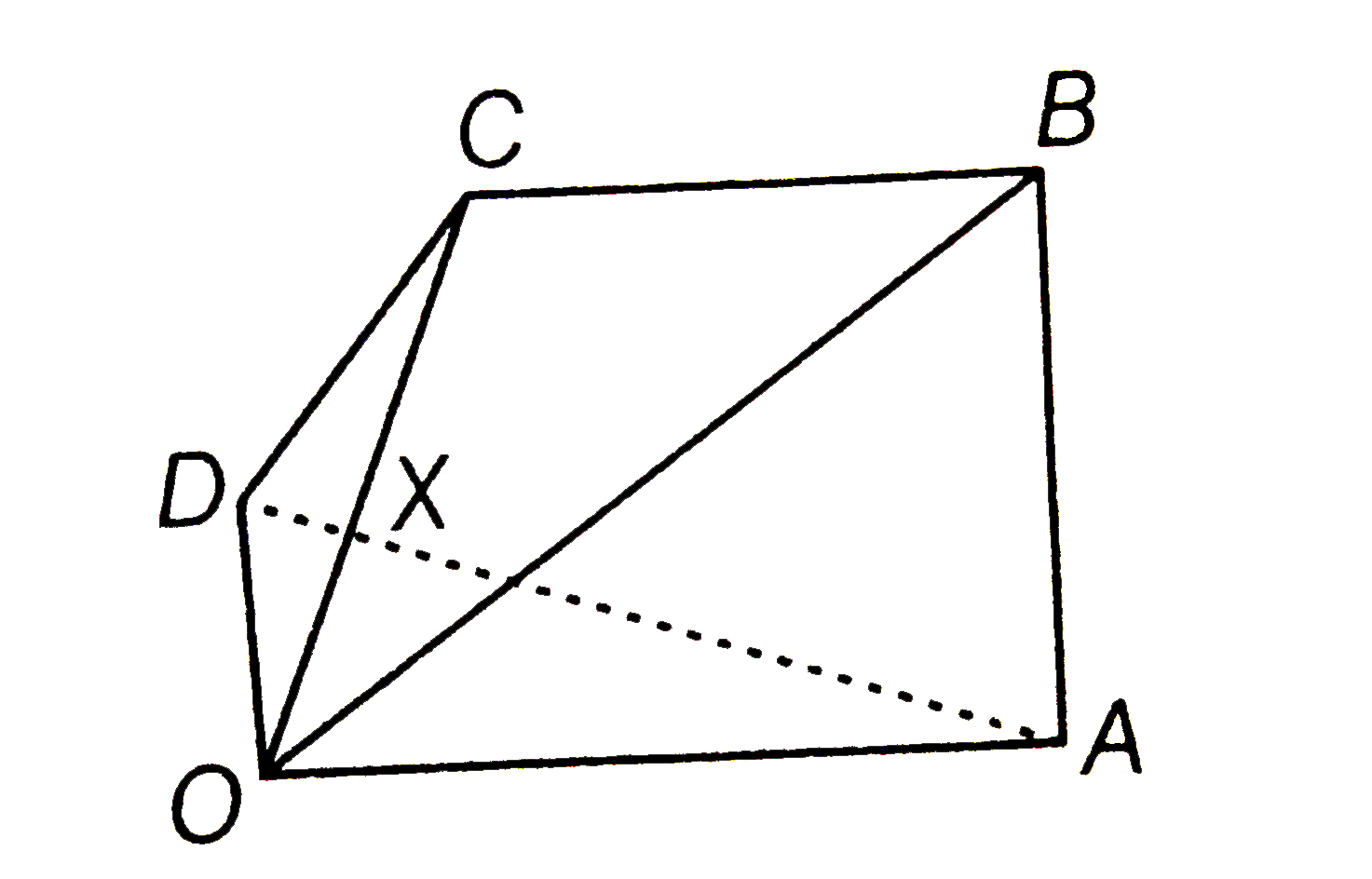If the vectors ˆi−ˆj,ˆj+ˆkand→a form a triangle then →a may be Solution in Punjabi
−ˆi−ˆk
ˆi−2ˆj−ˆk
2ˆj+ˆj+ˆk
ˆi+ˆk
The correct Answer is:A, B, D
a=[±(ˆi−ˆj)±(ˆj+ˆk)]
=±(ˆi+ˆk),±(ˆi−2ˆj−ˆk)
Topper's Solved these Questions
- VECTOR ALGEBRABook:ARIHANT MATHSChapter:VECTOR ALGEBRAExercise:Exercise (Statement I And Ii Type Questions)
Explore 3 Videos
- VECTOR ALGEBRABook:ARIHANT MATHSChapter:VECTOR ALGEBRAExercise:Exercise (Passage Based Questions)
Explore 11 Videos
- VECTOR ALGEBRABook:ARIHANT MATHSChapter:VECTOR ALGEBRAExercise:VECTOR ALGEBRA EXERCISES 1: Single Option Correct Type Questions
Explore 1 Video
- TRIGONOMETRIC FUNCTIONS AND IDENTITIESBook:ARIHANT MATHSChapter:TRIGONOMETRIC FUNCTIONS AND IDENTITIESExercise:Exercise (Questions Asked In Previous 13 Years Exam)
Explore 18 Videos
Similar Questions
Statement 1 : In ΔABC, −−→AB+−−→BC+−−→CA=0
Statement 2 : If −−→OA=→a,−−→OB=→b, then −−→AB=→a+→b
View SolutionLet OABCD be a pentagon in which the sides OA and CB are parallel and the sides OD and AB are parallel. Also, OA:CB=2:1 and OD:AB=1:3.

Q. The ratio AXXD is
View SolutionFind dydxify=12−x4
View SolutionLet αandβ be non-zero real numbers such that 2(cosβ−cosα)+cosαcosβ=1. Then which of the following is/are true ?
View SolutionIf the vectors ˆi−ˆj,ˆj+ˆkand→a form a triangle then →a may be (A) −ˆi−ˆk (B) ˆi−2ˆj−ˆk (C) 2ˆi+ˆj+ˆjk (D) hati+hatk
View SolutionIf →a.→i=→a.(ˆi+ˆj)=→a.(ˆi+ˆj+ˆk) . Then find the unit vector →a.
View SolutionIf →a=ˆi+ˆj,→b=ˆj+ˆk,→c=ˆk+ˆi then in the reciprocal system of vectors →a,→b,→c reciprocal →a of vector →a is
View SolutionIf →a.→i=→a.(ˆi+ˆj)=→a.(ˆi+ˆj+ˆk) . Then find the unit vector →a.
View SolutionIf →a=ˆi+ˆj,→b=ˆj+ˆk,→c=ˆk+ˆi then in the reciprocal system of vectors →a,→b,→c reciprocal →a of vector →a is
View SolutionIf →a=ˆi+ˆj,→b=ˆj+ˆk,→cˆk+ˆi, a unit vector parallel to →a+→b+→c.
View SolutionProve that for any vector veca , veca=(veca. hati)hati+(veca. hatj)hatj+(veca. hatk)hatk ,
View Solution(→aˆi)ˆi+(→aˆj)ˆj+(→aˆk)ˆk is value of :
View SolutionIf →a.→i=→a.(ˆi+ˆj)=→a.(ˆi+ˆj+ˆk) . Then find the unit vector →a.
View SolutionIf →a=ˆi+ˆj,→b=ˆj+ˆk,→c=ˆk+ˆi then in the reciprocal system of vectors →a,→b,→c reciprocal →a of vector →a is
View SolutionIf →a=ˆi+ˆj,→b=ˆj+ˆk,→c=ˆk+ˆi then in the reciprocal system of vectors →a,→b,→c reciprocal →a of vector →a is
View SolutionIf the vectors ˆi−ˆj,ˆj+ˆkand→a form a triangle then →a may be (A) −ˆi−ˆk (B) ˆi−2ˆj−ˆk (C) 2ˆi+ˆj+ˆjk (D) ˆi+ˆk
View Solution
